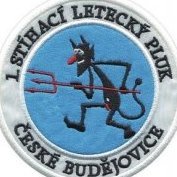Leaderboard
Popular Content
Showing content with the highest reputation on 05/30/2019 in Posts
-
MiG-23ML "4644" 1. SLP. Planá airport, České Budějovice, 1991 -first take-off of the aircraft was made on November 27, 1982 - fly to Czechoslovakia to ČB 22. 12. 1982 - total air raid 1136h and 41 minutes - The last flight took place on 26th October 2000 by Maj. Zdeněk Ouda Model: Trumpeter, Scale: 1/32 Author: Petr Pícha Photo: my frend Miloslav (thank you) Accessories: Aires-cockpit, nozzle, Wheels bay, avionics Eduard- photo etched part-exterior, Quickboost-cooling of aggregates Master-pitot tube, sparkers Linden Hill-Decals Customization: partially modified air intakes, APU-23, APU-60 -Helping keel - exhaust and suction channel of the turbostrarter - undercarriage legs -IR sensor -Other little things More Photo + building: https://www.leteckemuzeumliborezy.cz/mig-23/12 points
-
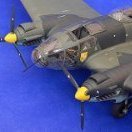
Harrier GR3 - Airfix 1/24th classic
Starfighter and 6 others reacted to tomprobert for a topic
Afternoon folks Here's Airfix's classic Harrier GR3 from the venerable 1/24th scale kit, warts and all. Built as it comes, but with some home-made additions to the cockpit and seat. The kit decals and Xtracolour paints were used throughout. For its age, it's a really nice kit. The cockpit is very basic and the landing gear and bays are lacking in details, but with some good old-fashioned scratch-building you can make a decent representation of the Harrier. Happy modelling! Tom7 points -
1/32 Fiat RS.14
Starfighter and 6 others reacted to AlexM for a topic
Sooo, here we are again Here is the trolley (or however this is called). It is higly speculative, as it's based just on a few crude black/white photos. I was inspired by this awsome model: http://archiwum.plastikowe.pl/relacje/cant-z506b-airone-72-supermodel I'm afraid the weird wheels are a bit too big, so they probably will be redone. I made new floats with the Anycubic Photon printer. I could print some surface details. The forward parts are filled with some lead bullets to prevent the notorious tail sitting. So, here we are at the moment Cheers Alex7 points -
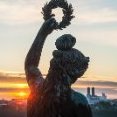
Revell Fw190 A-8 Sturmbock - any reviews / what's inside etc
nmayhew and 4 others reacted to Isar 30/07 for a topic
Gents, my 2 Sturmböcke have arrived yesterday. Just a very short (!) look at the kit yet: new fuselage halves including side armour moded on, 2 different canopy parts (one with Blinker - the add-on armour glass - and one without as a lot of Sturmböcke dismounted them due to the tendency to get foggy at different heights) and two colorful markings. As written - this was just a very short first look at the kit. Tomorrow I will post a few pics. Reimund5 points -
Good evening good sirs! I actually did some work – mainly weathering – on my Junk! Still WIP but coming slowly to an end ... :-) That´s it for now. Bye!5 points
-
Hi guys, sorry for the long absence due to the usual crazy working period! Although very slowly the works on the two 109 continue and so I show you some small progress .... The tail surfaces and rudder of the 109 Revell were already separated but I don't like the surface finish on the moving surfaces. In fact they had very heavy and unreal details when compared to the original. While for the 109 Hasegawa I had to use a hacksaw to separate the parts and I would have to work to rebuild the internal profiles. So I preferred to take two sets of Quickboost that fit well with both models, I just had to fill some small gaps with the usual styrene sheet. I also replaced the whell wells of the 109 Hasegawa with the Aires ones (beautiful but a little difficult to adapt) while those of the Revell kit remained because they were very beautiful and detailed. In both I added only a few wires made with lead wire and small pieces of pipe made from the insulation of electric wires .... For the painting I started from the usual black base with the Mr Surface 1500 and then "marbling" with sand and gray, to finish Grau02 glazes until you get the effect you see in the picture. Washings and lightening of the details will follow...... I have detailed the front canopies by adding the internal frame and the screened lights that illuminated the interior. I don't usually use pre-cut masks but this time for the 109 Hasegawa I used the internal and external ones of the Montex which proved to be very accurate. For the 109 Revell I went the old way, yellow tape and cutter with new blade ......... Finally, the legs of the undercarriage, which in the 109 Hasegawa are in one piece and removed the usual quite good burrs, while the 109 Revell has every single leg broken down into 4 parts and even assembling it with extreme care, the joints have remained evident. So I had to invent a little tool to sand them without ruining the cylindrical shape ...... it worked more or less. Until next time ... I hope soon. Sebastiano5 points
-
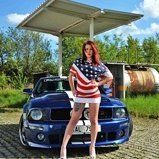
P-47D-25 & P-47D-30 1/32 Hasegawa
Starfighter Jock and 4 others reacted to Miloslav1956 for a topic
Today update.5 points -

Fokker pair 2
blackbetty and 4 others reacted to sandbagger for a topic
Hi all, I'm calling the undercarriage assembly done. The wheels are not permanently fitted yet - they'll be the last thing to be fitted. So now onto the upper wing and struts etc, Mike5 points -
I spent a bit of time in the engine room...a detail here and there ended up getting out of hand. It's not truly accurate (yet again) but more representative of the prototype. I made new engine mounts, magnetos and exhausts, I got frustrated after losing a precious scratch built header someplace made another, broke it, sighed and used the kit headers. I am making a new muffler and exhaust pipe though. I haven't wired the engine...I hope to not go that far with my details! The engine: Hmm sorry about the poor photo quality. Thanks for looking.4 points
-
1/32 Revell RF-4C 14th TRS
Landrotten Highlander and 3 others reacted to SapperSix for a topic
The exhaust and the cans have been a learning curve for me. I can not emphasize enough how much I have learned while making this model. My tool and product purchases have also been undergoing a considerable increase. All equaling a joy for the hobby as never before. I do want very much to make clear that I appreciate the many people, all over the world, that have have offered advice and knowledge both publicly and through PM's. Below is an example of the general reference I have been using for inside exhaust coloring. My book from Reid Air, The Modern Phantom Guide, has been providing and enormous amount of detail. Below is the Phantom GT Resin kit that I have spent the last week detailing, messing up, starting over and having another go. In the references the green goes from a darker green to lighter as the distance from the burner increases. This picture tries to capture that variation. It was lots of patience during the dry brush process. The detail in this resin product is very well done. A light black/green wash will fill in the secondary air holes. I did it a small section with black only and the contrast didn't appeal to the eye. A bit of dry brushing to the cans and some pastels will finalize this effort.4 points -
Did some work on the inside and the landing gear 110_5528 by Rick Martens, on Flickr 110_5529 by Rick Martens, on Flickr Working on the internals, starboardside cockpit done. Made the sidewalls behind the cockpit to cover the area to the observers place. I know most of it will not be visible but I know it is there. Ran out of ribbing material... 110_5534 by Rick Martens, on Flickr IP done with a little help from Airscale. Used all references I could get. Maybe not all that accurate but with some paint on it, it might just look right. 110_5536 by Rick Martens, on Flickr Starboard side console done 110_5539 by Rick Martens, on Flickr Made a start with the floor, all out of Evergreen card. 110_5543 by Rick Martens, on Flickr Also made a start with the landing gear. Filled the ejectionmarks and hollowed the wheelhubs. 110_5544 by Rick Martens, on Flickr The bench is the usual mess... Hope you like it.3 points
-
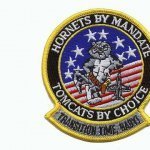
1/32 trumpeter F-14D
Durangokid and 2 others reacted to rosariovw for a topic
thanks for the support, got some done today. Started with the HUD, i tried to use some prismatic paint (alclad) but when i spray it, it gets white/flat. So, i used a brush, it worked great on the HUD lens. i tried it on the glass, and fucked it up, so made new ones. and sculpted a new wingbladder3 points -

Trumpeter F-117 Nighthawk
Uilleann and 2 others reacted to Squizzy 78 for a topic
After seeing several online builds of the Nighthawk, I knew that I had to dig mine out of the stash and get started. I was plasently surprised upon opening the box, I'd already purchased some aftermarket gear that I'd forgotten about. In the box was an Aires cockpit, an Eduard photo etched set for the bomb bay, and exterior set, 2 sheets from a Tamiya F-15 e kit, for the laser guided bombs, and Caracal models decals. I'm pretty sure that I purchased most of this at a Melbourne Model Expo several years ago, so I've just ordered a set of resin wheels, the Eduard set for the cockpit, for used on the canopy only, and a new canopy with the reflective coating. Getting started, I wanted to get the cockpit fitted, which included some modification to the top fuselage half, nothing too hard, but just requiring constant dry fitting to ensure that I didn't take too much out. Also the IP combing needed to be removed, and some strine strip was used some the Aires IP would fit, and so would the kit piece for the FLIR bay. After that, I wanted to dive into getting the cockpit done. This Aires set is a perfect fit, with amazing detail, and the owner of the local hobby shop and just put me onto Vallejo acrylic paints. Now I'm just waiting for some warmer weather to airbrush the IP, and get the cockpit put together and installed. Thanks for looking.3 points -
3 points
-
AMS Resin P-47M/N Props and Wheels
Rick Griewski and 2 others reacted to Joe Hegedus for a topic
The extra canopy from the Hasegawa kit will go on the Trumpeter with very little fuss. A bit of plastic card to fill the gap at the front, and some thin strip to shim a couple little places around the rear sides of the windscreen is pretty much all it takes, after trimming a small amount from the front of the locating tabs on the windscreen to clear the instrument panel. Only catch is that either the Hase or the Trumpy will have a closed canopy, if that matters to you. I've done it twice now, once on a Trumpy D-30 that I built as an "M", and on an "N" that I'm currently working on. In all honesty, the fitting of the Hase glass was much less hassle than dealing with the gun bay doors, all the invisible internal stuff that no one will ever see but sort of needs to be there to hold other things in place, or the miserable lack of positive engine attachments.3 points -

Fokker pair 2
bstachel and 2 others reacted to sandbagger for a topic
Hi all, Just a lick of paint on the struts and cross bracing to attach and the undercarriage is done, Mike3 points -
Hi All, After seemingly endless masking I’m almost done with the painting bar a little touching up. I used mr color paints and they were really great and performed faultlessly. Gloss coat next and then a few decals before weathering. cheers Matt3 points
-

Mil Mi-24 Hind Tiger Meet
Rick Griewski and 2 others reacted to BloorwestSiR for a topic
Here's the seam after sanding. I then installed the engine covers. These are supplied clear so I gave them a quick spray on the inside. The fit here was really good. Which was a nice surprise. Next up will be the nose turret and some of the various sensors.3 points -
Since I did not have the 9v battery holder to experiment with until last night, I forged on with something a bit different that needed to be scratched up. That is the Paillard Bolex 16mm moving camera the back seater will have. Here is a very basic start to it: All just basic initial shapes at this point. Here you can see how it will fit into the observers left hand. The camera will be on the observers lap, or possibly lightly above it, as his other arm will be raised to the canopy with a clenched fist in excitement! Still much MUCH more re-shaping, refining and adding of details to the camera yet. I also know its a bit over-scale, but with the details I want to add it cant be helped. Here is the front triple lens pack that will eventually go on the front (sorry about the photo quality, these things are TINY). Eventually, these will all get "lenses" out of UV gel and some Future: Finally for this small update, here is the very minimalist 9v holder. I specifically chose this style, as it has the least amount of material around the battery. After fit trials, this I think will work!: All for now, as the next step is to do another full lighting test with all lights hooked up to the new power source, to find out if it works like I hope its going to. After that I can start figuring out how I want to mount it all inside, along with the switch.3 points
-
Ciao, a little update on both my 109 I've spent a lot of time on the wings of the 109 G-2, because I was sure that it was a normal G-2 without che bulges on the wings, so to avoid to use the resin parts from the AlleyCat set (I'dont like to glue big resin parts with the cyanoacrilate ), I had to remove the bulges on the Revell wings and to fill with superglue and putty the inner part of each bulges. Adding on both kit the circular riveting tipicaly of the bf109's wing. but after some weeks, looking for other pictures of my 109 G-2, come out two shots that show unequivocally that show clearly the bulges on the wings. I'm not a super expert on Bf109 and I dont know exactly how to explain it. Maybe it was a late type of G-2 with the G-4's bulged wings and large tyres or maybe it was some field modification due to combat damage. Right or wrong..... I'm needed to restore the bulges again. and after having previously filled it, I had to carve again the inside of the bubble on which the wheel went inside the wells. For the F-4 wheels, I will use those from the Aires set, while for the G-2 the work will be different; My model had wheels with a larger diameter tire, typical of the G-6, but the spoked rim of the F. To make it happen I used, with minimal adjustments, the original Revell wheels for the G-6 adapting the spare spoke rims from the Eduard 109 E box, the internal diameter of the rim is slightly larger than the inside of the Revell wheel but with a some sandpaper is fixed in a moment .... I also corrected something that I did not like too much on both models. In the real airplane, the upper cover of the guns compartment closed on the fuselage creating a small step. This effect in both models, due to the various sanding steps, was lost so I solve with a plastic sheet 0.1mm shaped to size. I just have to add the fasten hooks that I will take from the scrap parts of the Revell box ..... I's all for now. Ciao Sebastiano3 points
-
After a long time, I come back to update this post also thanks to work done in the Christmas holidays. I've started to paint the interior using the "black base" thecnique with Mr Surface1500 adding some sprayed spotted texture of light (raised parts) and medium grey and at last aome light layer of RLM66 until the result let me satisfyed. Tomorrow I will continue the painting adding the various details and with the weathering process I'we doing somethign on the wheel wells , openig the holes on the inner part. I'dont like too much the Hasegawa wheel wells because are no detail on the surface so probably I'll replache these with some aftermarket parts. In the meantime, I've take back the other Bf 109 that I've stopped some months ago for some problems to fit the Aires cockpit into the fuselage. It is the G-6 Revell that I would to backdate into a G-2/trop using the Alleycat set. The Revell is lovely and have very fine details. The camouflage I've chose is the standard desert scheme in RLM 78/79 but with an interesting field variation of an overpainted "wave mirror" in green RLM80. In this way I could go in tandem, saving a lot of time. I'dont have the decals for this G-2 but I think that not will be a big problem. I'll try to use self made mask for painting numbers and unit emblem. [/url] So I've started to detail the external surface adding rivets and emptying the inside of the exaust stacks and the air vents and scratchbuilding the exaust protection as doing on the F-4 model also I've added the sand filter from Quickboost. I painted the cockpit as described for the F-4, in the end the result satisfies me. Just a little touch of desert sand on the floor using pigments. and after the worst challenge.....put in the Aires cockpit. I think this is an adjustment of the old interior for G-2 hasegawa kits to use it in the new revell . At the end, after a lot of file and sandpaper work, I did it. In my opinion the set Aires is not essential because the Revell's interiors are beautiful and detailed, only the rear seat belts molded together with the seat back (5 minutes working with the round blade cutter). I do not know why I took this set. Now I can close the fuselage and glue the resin top of the engine cowling. To be able to assemble the two brass MGs after painted the model, I glued two small styrene tubes inside the cowling just in correspondence with the holes for the machine guns. Here is the two Bf109 togheter It's all for now, hope you like the progress. Sebastiano3 points
-
Hi, i just finished this kit by MRC which i bought 20 years ago. had some major issues, as the decals have deteriorated and somehow the canopy had warped and a slight crack. other than than, it was an interesting learning experience building this kit without a conventional build guide. the mrc kit's instruction were more of an instruction with words rather than the normal pictorial guide. after some reading, there is a black and white photograph of how the part should look like after assembly. sure was interesting to me. I used the 2 bobs decals "whiskey in the mix" and Eduards BIG ED photo etch parts which were a real delight as the added quite a bit of detail to the kit. anyway, hope you enjoy the pics. sorry for the poor photography.2 points
-
More work on the Rhino. Pictures look rough, but it will clean up once done! First, I closed up the main wheel well doors. These required the usual shimming and adjustment - on almost every surface to get fitting somewhat respectably. The drawback of being an aircraft modeller.... Note the seams that needed addressing nearly all round with some Bondo (red) putty. These weird triangle indents done by Trumpeter were filled with shaped 1mm plasticard: And the ladder door was taken off and refitted as best i could flush, will need some filler, I couldnt find the small tab piece at the end so added with plasticard. Next will be wing and nose reattachment and filling those seams, spot priming to check it all looks good, then I can get on with the cockpit and crew. Ordered some new low viz decals and stencils - very hard to find!2 points
-
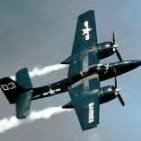
Revell Fw190 A-8 Sturmbock - any reviews / what's inside etc
Darren Howie and one other reacted to Out2gtcha for a topic
Having built an A-8 Stormbock, I can attest that the differences *SHOULD* boil down to : - cockpit fuselage side armor plates - later smooth tires (depending on the individual airframe) - short wing canon w/boot - new canon ejector chutes - upper fuselage mg covers - armored side glass panels - armored windscreen All mileage may vary2 points -

Defiance and Devotion......Revell Hasegawa Spitfire
Loach Driver and one other reacted to williamj for a topic
I was asked to repost pics of my Revell Has. Spitfire...could not find the original pictures,so we re shot some. They're not great.. but kinda in the middle of things at the moment.. This is the older kit..won't go into the differences comparing it to the new one..no point as this kit is getting hard to find. .Traded my last one to Martin.. hope he posts some WIP here. Back to fishing..Cheers for now...Bill.2 points -

F-104D Starfighter - 57-1315 - AFFTC Edwards AFB, 1960
Alain Gadbois and one other reacted to Out2gtcha for a topic
The only real disadvantage to the 9v setup VS the 4 AA setup is run time. Per MSM, the run time of the lighting animation is shorter than 4 AA setup. However, I believe because of the low overall draw of the LEDs, that even with a 9v setup the animation time will still be long enough for displays and contests, since I wont have it on all the time. First thing I did over the long weekend was to glue the rear empennage halves to their respective fuselage halves, VS trying to glue the forward fuselage together and then glue the rear empennage section of the fuse to it. I also noticed at the same time that after I glued on the speed brake doors, they were a bit sunken in, and about 1/2mm too deep, so while I was at it, I used some PPP (Perfect Plastic Putty) to fill the speed brakes, which I will later re-scribe after sanding: Next, after receiving the 9v battery case, I started back in on my experiments on powering the system. I think the 9v is the solution I've been looking for! It has the right size I need, and after full power tests, I can confirm how long the battery will last with all the LEDs powered. First things first, I know for sure, no matter the actual power source, I will need access to all this from the outside. A hatch had to be created to allow access to replace the 9v battery, and the obvious choice was the MLG doors. After initial dry fit trials, I found the MLG door fit to be excellent actually, so I proceeded with using them as the new hatch for the system. The MLG bay, with two bulkheads around it fit so nice, that I decided to keep the internal bulkheads so that the hatch will stay more aligned in the end. The fit of the MLG bay and bulkheads is really nice: After more dry fit trials, I glued all 5 of the MLG door parts together to make a single solid part, reinforced with styrene strips: After once again going through extensive dry-fit sessions, I found the fit of the hatch after assembly also really good, save a bit of a gap at the back of the hatch that I will fill later with styrene and filler: After removing the hatch and disassembling the unit once again, I made some modifications to the hatch; cutting the tab off the front, and cutting down the tab in the rear, along with its corresponding hole in the fuselage, so the rear was a snug fit that slides in and holds solidly, and the front just lays down lightly on the front edge (later to be held on with magnets): You can see here the hatch seated with its rear tab in place and front tab that will be cut off that normally fits into the slot below it: Here you can get an idea of how the hatch will lift off after the front tab was cut off, although in the final config I will have to push down the trailing edge first to get it to catch, then lower the front onto the magnets: When I get the internal bulkheads configured like I need them, I will cut out the center section of the MLG floor, keeping the outer edges so the hatch will have a place to set on once finished, yet I will still be able to remove the battery. I did some gluing and cutting of the internal bulkheads yesterday, and it appears the size is about right for removal and placement of the battery, I will do more testing tonight on the power supply itself, now that I have it wired up, and ready to plug into the circuit board. Now I just have to find out what kind of switch I want to use to proceed with the full electrical tests. More pics later! Cheers2 points -
Do we know that for sure? I know the 8-spoke wheels came out with the P-47N, but were they also available for the D and M? There are pics of restored P-47D aircraft with the 8-spoke so sounds like they fit, but can't find definitive wartime pics. Many had smooth covers, too. Note, the True Details 8-spoke wheels are listed as for the D version, although you can't really say how accurate that is since it also has post-war tires on them. I can't find in my ref's any real mention of the wheels other than saying they changed with the N, but they don't say whether they appeared on late other P-47's, too.2 points
-
2 points
-
This is hands down "the nicest" Mig-23 I have seen on the net to date. Bravo! Thanks for sharing Peter. Cheers Martin2 points
-
1/32 Marauder
Model_Monkey and one other reacted to AlexM for a topic
Thank you, guys Guilty as charched Yes, I am. And as I see, you weren't idle with your own 3d printing project. The ailerons of the Marauder were masekd, and got some primer to replicate the fabric cover (hard to see on the photos) Today I ordered some Vallejo Liquid Mask. Hope this is usefull for masking the navigation lights. Cheers Slex2 points -

Revell 1/32 F4U Corsair - DONE!
MikeC and one other reacted to themongoose for a topic
Finished with a Satin Clear. I was thinking that sheen would look more realistic. I've continued to work on my airbrush technique. Instead of spraying in long strokes I did smaller areas and built up the paint slowly. I managed to do all this in 2 coats doing it that way. It's taken me awhile to get the airbrush technique down. My other work with dark colors has come out somewhat splotchy I think, not a uniform color across surfaces. This is much better. It's still a bit hard to capture the fading that I did with the black basing but you can see some in the pics. Later I'll try to take better pictures and see if I can capture it better. The positive thing about it is that the fading is reserved and doesn't look overdone. In regular light it shows up really well so I'm sure I can get better pictures.2 points -
So, after attending a weekend workshop on figure painting at our local scale modelling club, I put some of what i learned to use... Cheers: Kent2 points
-
did some work today, (not that much, cause lost my job today) to keep the mind clear. Added detail to the ventral fin, one done, 1 to go. And every time, adding panels to the forward fuselage, and let me tell ya, fitting sucks. On most places i need to add spacers, or the gaps are huge. Did some windscreen details And the ECS vents2 points
-

Fokker pair 2
LSP_Ray and one other reacted to sandbagger for a topic
Hi all, Front undercarriage struts made using 1.4 mm brass tube and 0.5 mm brass rod, soft soldered for strength, Mike2 points -

Fokker pair 2
blackbetty and one other reacted to sandbagger for a topic
Hi all, The lower wing is now installed, with some slight adjustments to clear the fuselage side frames and to give adequate access to the single wing strut mounting location. Next is the undercarriage, once I've completed making the undercarriage struts from brass tube and rod, Mike2 points -
2 points
-
Thanks Thomas I am always a little mortified when folks say they are discouraged by what I post - I understand the emotion if you see something you think is better than you could do, but ultimately I think it's like a ladder - i was on a rung somewhere at the bottom when I started, and after lots of trial and error I ascend a step at a time - now maybe somewhere in the upper middle... before you say anything, I too see builds that take my breath away, or make me feel inadequate for a moment, and then I realise that they are actually my inspiration -I wanty to be as good at every discipline as they are... I got one this week - an email from Model Motorcars where I once bought some bits and in it was a link to a guy who built a Lincoln Continental - now I am not a car guy when it comes to models, but when I looked at what he does, and how he does it all in metal, I was staggered - this is a car in 1/25 - smaller scale than my P51, yet what he does I could not do in 1:1 scale.. I see this, I wince, and then I get fired up to be like that here's the link.. it leaves me feeling huge surges of inadequacy... Peter2 points
-
I have had a real mixed bag of luck with transparencies since migrating from 1:48th to larger scale models. This canopy seemed to be cracked on both flat windscreens. Fortunately the rear one was a scratch that I could polish out, but the front one was cracked and I resorted to drilling it out and replacing with a piece of clear PETG. Needless to say I nearly destroyed the now flimsy forward frame and decided to glue the front "hatch" closed to increase the strength of the canopy as a whole unit. Here you can see the added framework inside the opening part, as well as a locking handle and a piece of air-conditioning piping. Each crew member has a little fan to blow air as desired in the cockpit, but the kit only provides one, so I had a little fun manufacturing another. The punch was really useful for the blades. For those who are hesitant about scratch building, here is an example of how a complex looking object is really just a collection of basic shapes. Another example is the jettison handle. The doors area bit basic OOB, so some PE and styrene to refine the look. Trumpy simplify the hinge mechanism by using two "elbows" on top of the door structure, but the Mi-24 only has one on the forward side, and a restraining cable on the aft side. The MONTEX mask for this canopy is quite a feat in measurement, and fits the inside perfectly. I added these fairly distinctive handles to the framework, completing the detailing. A fire extinguisher was added to the area just behind the left side of the cockpit, and finally the fuel line that everyone must trip over when trying to access the central compartment. I was in two minds about using the PE instrument panel for the pilot, but in macro it sure looks a lot neater than the kit part. you will notice that I plan to ditch the nav display provided, and rather use a blank display with a warning from my MiG-23 decals (doesn't look legible to me). And to answer Marcel's question... The most potent weapon against the Mi-24 in Angola turned out to be this little fighter - the AerMacchi MB-326K. It was licence-built by the Atlas Aircraft Corporation of South Africa, and known to us as the Impala Mk II. Armed with two DEFA 30mm canons and a well trained pilot, it was a formidable low level adversary. I will tell more of the story in due course. Cheers! Sean2 points
-
I've been 'hunting' for some fitting figures for the 1920's theme for quite a while now. To me It's important to get the right figures for my builds, almost as important as the kit itself. I've decided to use some of Copper State Models very nice RFC pilot's for the flying crew. The standing pilot is OOB, but I've done some modifications to the sitting pilot. I think they correspond OK with these guy's... But the passengers, were a tough one. There's a lot of WW2 civilian figures around, in 1/35 scale. I probably would have been able to live with the size issue, but I imagine it would have been a massive undertaking, converting them into 1920's flapper's and the like. Anyway I finally caught a break when I came across these Preiser train figures: They are almost perfect for the Aeromarine build, perhaps a little on the 'old' side, but nothing that is easily 'fixed'. And they are 1/32 scale! The sprues in white styrene, just like the good old 'multipose' figures from Airfix. There's even a guy with a 'boater' hat. It's almost too good to be true, many of the figures are fitting the seats right away and they are even looking out the window! The standing 'conductor' is almost an exact match to the guy in the middle of this photo... Sorry about the excitement, but I just had to share this amazing find with you! Cheers: Kent2 points
-
Cockpit about done... The lower middle wings in place with the brass reinforcements... Cheers: Kent2 points
-
, Thank you Lothar, well it isn't. With this build it's really uphill all the way, as there's absolutely nothing that just goes into place. Every part has to be modified/scratched to some degree. I'm actually looking forward to the rigging... Now the fitting of the parts into the converted cockpit, has developed into a bit of a nightmare. It's an endless series of trial and error to get everything fitted into place. There's really no extra room anywhere. I've deliberately postponed working on the piping for the fuel tanks, as there's almost no space for the fuel lines and pipes. But I'm sure they were there... somewhere. . Now the main parts for the cockpit have found their place, I think, the last parts to fabricate, are the rudder pedals... Then again, I have no idea, where to put the gauge panel for the fuel tanks, every little space is already occupied... Cheers: Kent2 points
-
2 points
-
Planet Models Vought XF5U-1 Flying Pancake, circa 1947
shadowmare and one other reacted to ericg for a topic
I ended up putting it in my jets cabinet as it is the only cabinet where I can display it on its rotating base due to its size.2 points -
That’s a beautiful dirty bird.1 point
-
I felt the same after reading Gerald Wingrove's book The Complete Car Modeller nearly 30 years ago. But then you twig that the builder is not a magician, but a talented modeller with a good understanding of tools and techniques mimicking industry engineering in miniature. Rather like yourself, Peter. Multiple well deserved kudos notwithstanding.1 point
-

Trumpeter F-117 Nighthawk
Squizzy 78 reacted to Dany Boy for a topic
Thanks for sharing Looking very promising I will follow this thread1 point -
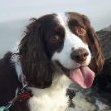
Revell 1/32 P-51D Glamorous Glenn II
Alain Gadbois reacted to JefH for a topic
Hello again. My usual slow progress continues. Pretty much out of the box so far with a few airscale decals to busy up the kit decals and a little bit of wire added to the radio. A couple small bits are still missing till after I get down my flat coat. My plan is to let the gloss dry further overnight, then add some washes. So far great kit, but my only complaint is the instrument panel decals. Mine did not line up correctly and I'm not loving how it turned out. Since I've seen other builds online that turned out perfectly I'm going to assume it was an operator error on my part. However if I had to do it again I'd probably cut out the individual dials like I usually do. Thanks for looking. Jeff1 point -
And re-shaped the ventral fins, and added depth on the NACA vent. The fins are too thick, so its sanding like hell. Atm i'm thinking casting them in resin, so i have them for future builds. But they are still in progress.1 point
-
1 point
-
Soooooooooo much prep work. I have never had the opportunity nor the wherewithal to apply this kind of attention to a model. I am really excited about the potential of this model. Since I have come to this site I have leaped in all aspects of modeling due to all the excellent builders here.. More fuselage adjustments to make room for resin aftermarket items. Resin exhaust prepped, test fitted and researched. I have a ton of Alclad and for the exhaust sections of this aircraft. I have been doing a ton research on the exhaust itself and the application of Alclad. I will do some test shots on my test airbrush plane. I will really have to focus on the hues, hell everything actually..... The ALQ-71 Short (after I put in the missing antenna's) and ALQ-101are ready for primer. I haven't heard back from the pilot of this aircraft to determine which nose he used on the short. So I will prep both. All the extra resin that hasn't already been prepped is now ready.1 point

